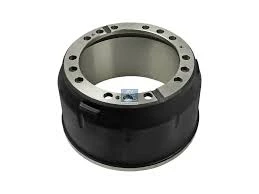brake spring tools for drum brakes
Understanding Brake Spring Tools for Drum Brakes
Drum brakes are a commonly used braking system in vehicles, especially in older models and in certain applications like trucks and trailers. They function through a set of brake shoes that press against a rotating drum to create friction, ultimately slowing down or stopping the vehicle. A critical component of the drum brake assembly is the brake springs, which help maintain the proper positioning of the brake shoes and contribute to the overall efficiency of the braking system. This article will explore brake spring tools, their significance, and how to use them effectively in drum brake maintenance.
The Importance of Brake Springs
Brake springs play a vital role in the drum braking system. They serve several purposes
1. Returning the Shoes When the brakes are released, the springs return the brake shoes to their original position. This prevents the shoes from dragging against the drum, which can cause premature wear and decreased fuel efficiency.
2. Maintaining Shoe Position The springs hold the brake shoes in place, ensuring they are positioned correctly when the brakes are engaged. This alignment is crucial for providing maximum contact area between the shoes and the drum.
3. Modulating Force When the brakes are applied, springs help modulate the force exerted by the shoe against the drum, contributing to smoother braking and reducing the risk of locking up.
Tools for Brake Spring Replacement
Replacing the brake springs can be a challenging task due to their tension and the confined space of the drum brake assembly. To effectively and safely complete this task, several specialized tools are essential
1. Brake Spring Tool This is a specialized tool designed to install and remove brake springs without damaging them or the brake assembly. It typically features a hook or claw shape at the end, allowing users to grip the springs securely and apply the necessary force.
2. Pliers A pair of long-nose pliers can also be useful when working with brake springs, especially when the springs are hard to reach. Additionally, pliers can help in pushing and pulling springs into place.
3. Socket and Ratchet Set Some drum brake assemblies may require the removal of bolts and other components for easier access to the brake springs. A socket and ratchet set is valuable for these tasks, allowing for efficient disassembly.
4. Brake Tool Set A comprehensive brake tool set may include various adapters and extensions tailored for brake work, which can make the job more straightforward and comprehensible.
brake spring tools for drum brakes

5. Safety Gear It’s essential to wear safety glasses and gloves when working on brake assemblies to protect yourself from potential hazards.
Steps for Replacing Brake Springs
When replacing brake springs in a drum brake system, follow these steps for a safe and effective process
1. Preparation Ensure the vehicle is on a flat surface and secure it using wheel chocks. Lift the vehicle using a jack and secure it with jack stands.
2. Remove the Wheel Take off the lug nuts and the wheel to access the drum brake assembly.
3. Remove the Drum If necessary, you may need to remove the brake drum to access the brake shoes and springs. This may involve removing additional components.
4. Remove Old Springs Using the brake spring tool, carefully detach the old springs from the brake shoes and backing plate. Be mindful of the tension and potential snap-back.
5. Install New Springs Position the new springs and use the tool to attach them securely. Make sure to follow the manufacturer’s recommendations for spring placement.
6. Reassemble Reattach the brake drum and wheel, ensuring all components are secure.
7. Test Before driving the vehicle, test the brakes to check for proper functionality.
Conclusion
Brake spring tools are indispensable in maintaining and servicing drum brake systems. By understanding their importance and following proper procedures, vehicle owners and mechanics can enhance the safety and performance of the braking system. Regular inspection and timely replacement of brake springs can significantly extend the life of the brake components and ensure a smooth driving experience. Whether you're a DIY enthusiast or a professional mechanic, having the right tools and knowledge is key to effective brake maintenance.
-
The Power and Reliability of Brake DrumsNewsAug.27,2025
-
The High-Quality Truck Brake DrumsNewsAug.27,2025
-
Quality Brake Drums for Reliable PerformanceNewsAug.27,2025
-
Get the Quality Semi Trailer Brake Drums for Your FleetNewsAug.27,2025
-
Everything You Need to Know About Brake DrumsNewsAug.27,2025
-
Enhance Your Vehicle's Performance with Reliable Brake DrumsNewsAug.27,2025
-
Truck Drum Brake Spring Replacement ProcedureNewsAug.22,2025


